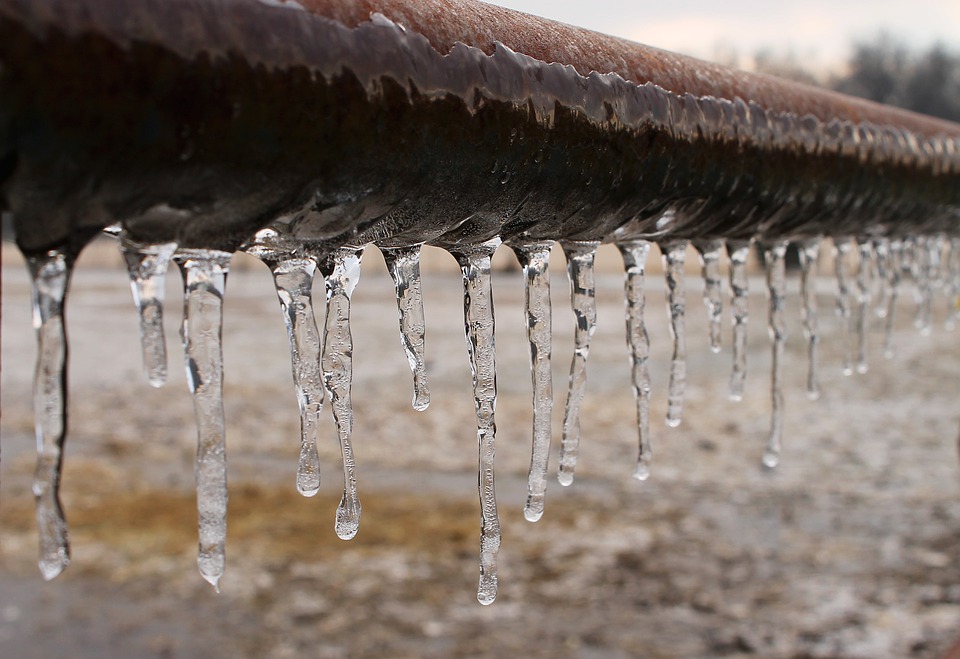We've found this article pertaining to How to Prevent Your Pipes From Freezing listed below on the net and thought it made perfect sense to quickly share it with you over here.

Winter can wreak havoc on your plumbing, specifically by freezing pipes. Right here's just how to stop it from occurring and what to do if it does.
Intro
As temperature levels drop, the danger of icy pipelines rises, potentially resulting in expensive repair services and water damages. Recognizing just how to prevent frozen pipes is essential for property owners in cold climates.
Prevention Tips
Insulating vulnerable pipelines
Cover pipes in insulation sleeves or use heat tape to shield them from freezing temperature levels. Concentrate on pipes in unheated or external locations of the home.
Heating techniques
Maintain interior rooms adequately warmed, particularly areas with pipes. Open closet doors to allow cozy air to distribute around pipelines under sinks.
Exactly how to recognize frozen pipelines
Search for lowered water flow from taps, uncommon odors or sounds from pipes, and visible frost on revealed pipes.
Long-Term Solutions
Architectural changes
Think about rerouting pipelines far from outside wall surfaces or unheated locations. Add additional insulation to attic rooms, basements, and crawl spaces.
Updating insulation
Invest in top quality insulation for pipes, attics, and walls. Correct insulation helps preserve regular temperatures and reduces the threat of frozen pipes.
Safeguarding Exterior Plumbing
Garden hoses and outdoor faucets
Disconnect and drain yard tubes prior to winter months. Mount frost-proof spigots or cover outdoor faucets with shielded caps.
Recognizing Icy Pipes
What causes pipelines to freeze?
Pipes ice up when subjected to temperatures listed below 32 ° F (0 ° C) for prolonged periods. As water inside the pipelines freezes, it increases, taxing the pipe wall surfaces and potentially creating them to rupture.
Threats and damages
Icy pipes can bring about water system disruptions, property damage, and pricey repair work. Ruptured pipelines can flooding homes and cause substantial architectural damage.
Indications of Frozen Water Lines
Recognizing icy pipes early can stop them from bursting.
What to Do If Your Pipes Freeze
Immediate actions to take
If you presume icy pipelines, maintain faucets available to eliminate stress as the ice thaws. Utilize a hairdryer or towels soaked in hot water to thaw pipes slowly.
Conclusion
Preventing frozen pipes calls for aggressive actions and fast actions. By comprehending the causes, signs, and safety nets, house owners can safeguard their plumbing throughout cold weather.
5 Ways to Prevent Frozen Pipes
Drain Outdoor Faucets and Disconnect Hoses
First, close the shut-off valve that controls the flow of water in the pipe to your outdoor faucet. Then, head outside to disconnect and drain your hose and open the outdoor faucet to allow the water to completely drain out of the line. Turn off the faucet when done. Finally, head back to the shut-off valve and drain the remaining water inside the pipe into a bucket or container. Additionally, if you have a home irrigation system, you should consider hiring an expert to clear the system of water each year.
Insulate Pipes
One of the best and most cost-effective methods for preventing frozen water pipes is to wrap your pipes with insulation. This is especially important for areas in your home that aren’t exposed to heat, such as an attic. We suggest using foam sleeves, which can typically be found at your local hardware store.
Keep Heat Running at 65
Your pipes are located inside your walls, and the temperature there is much colder than the rest of the house. To prevent your pipes from freezing, The Insurance Information Institute suggests that you keep your home heated to at least 65 degrees, even when traveling. You may want to invest in smart devices that can keep an eye on the temperature in your home while you’re away.
Leave Water Dripping
Moving water — even a small trickle — can prevent ice from forming inside your pipes. When freezing temps are imminent, start a drip of water from all faucets that serve exposed pipes. Leaving a few faucets running will also help relieve pressure inside the pipes and help prevent a rupture if the water inside freezes.
Open Cupboard Doors
Warm your kitchen and bathroom pipes by opening cupboards and vanities. You should also leave your interior doors ajar to help warm air circulate evenly throughout your home.

I am just very involved in Preventing and dealing with frozen pipes and I hope you liked the entire piece. Don't hesitate to pause to promote this post if you liked it. Thanks so much for taking the time to read it.
Click Here